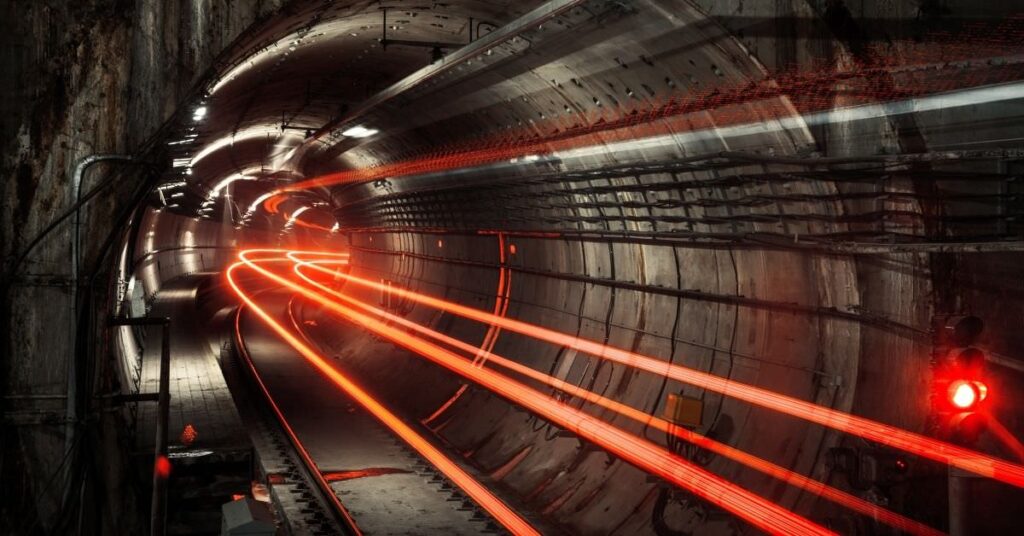
Let’s explore the history leading up to fibre internet?
When exploring the question of what is fibre internet let’s start by exploring dial-up? Yikes, who would want to! Back in the day, when the internet first started, dial-up was it, and it was mind-blowing. People went nuts for dial-up to connect to the internet, and then they went nuts waiting for it to connect.
Now we have fibre internet, and people go nuts for fibre because it’s so fast. Then they go nuts because it seems to be expensive. But what makes fibre internet lightning-fast and seemingly expensive?
Allow us to shed some light on the subject and bring you up to speed.
A trip back in time, to 1979.

Let’s browse back over time. In 1979, Tom Truscott and Jim Ellis created a dial-up predecessor to connect to the internet called USENET. USENET was UNIX based and used a dial-up connection to transfer data through telephone modems.
Dial-up internet has existed since the 1980s, Pipex in the UK and Sprint in the USA commercialised dial-up in 1992. During the 90s, demand for dial-up began to decline after the introduction of broadband internet.
Dial-up uses the facilities of the public switched telephone network (PSTN) to establish a connection to an internet service provider (ISP). This connection is established by dialling a telephone number on a conventional telephone line. The connections use modems to decode audio signals into data sent to a router or computer and encode signals from the latter two devices to send to another modem.
Multi-tasking was not possible with dial-up.
With dial-up, you could not connect to the internet and make a voice call simultaneously. When dialled up to the internet, speeds reached a pinnacle of 56Kbps (kilobits per second) limiting multitasking capabilities. Let’s put that into perspective.
Your minimum speed with fibre is now 50Mbps (megabits per second) and 56Kbps is 0.056Mbps which means it was much slower, nearly 1000 times slower! A web page that is 1Mb in size will take roughly two and a half minutes to load with a dial-up connection. With fibre internet, it should take a maximum of 2 seconds.
Do you see the light yet? Keep reading.

The ground-breaking discovery of broadband internet.
Broadband internet was a ground-breaking innovation in internet speed. Internet service providers leveraged the same cable infrastructure used for TV connection to your home to offer faster internet speeds to their customers.
The disadvantage with broadband internet is that cable is shared amongst multiple homeowners within an area. This sharing means the bandwidth is divided amongst the other homes causing slow internet speeds during ‘peak’ hours.

Internet goes digital.
DSL, which means digital subscriber line, is used to access broadband data over the internet. This internet type uses a DSL modem and standard telephone line to carry data from one computer to the next. The benefit of DSL is that it carries voice and data over the same telephone lines simultaneously, which means you can browse and make telephone calls together.
DSL is not as fast as cable, but it is cheaper than cable. Ah, “cheaper!” – a word we all understand. With DSL, you don’t share bandwidth with other homeowners in your area, as each home has a dedicated connection.

The different types of DSL internet.
- ADSL represents an asymmetric digital subscriber line and means download speeds are considerably faster than upload speeds. ADSL is used mainly in homes.
- SDSL stands for symmetric digital subscriber line and means download and upload speeds are the same. SDSL is more suitable in a business setting.
- VDSL means a very high bit-rate digital subscriber line. VDSL is the fastest form of DSL, which runs on copper wire. It is made to travel over short distances. For longer distances, VDSL can use fibre optic cable, which is 3x faster than ADSL.
Fibre internet explanation.
Fibre internet is currently the fastest internet speed available today, with download and upload speeds of up to 1000Mbps.
Unlike VDSL which uses a copper cable to send data via electricity and can be affected by electromagnetic interference, our hero fibre sends data with light. Yes, with light!
This light is transmitted through a fibre optic cable, a thin glass cable. It travels three times faster and over considerably longer distances, without interference compared to copper cable. Fibre cable is therefore expensive to manufacture and install. It is why it is not so readily available in remote or rural areas.

Fibre to your home.
This internet gets delivered to your home using fibre optic cable, either from an underground or above-ground power supply. The optic cable runs directly into your house and is called Fibre to the Home (FTTH).
Your FNO (fibre network operator) installs a fibre termination box, known as a CPE, in a location of your choice as long as it is near a plug point. WiFi routers get plugged into the CPE. After deciding where to position the CPE, the best route to lay the cable gets mapped out.
Once the cable has been laid, it is connected to your wall box and inside the CPE. When the FX light on the CEP is active, it’s an indicator that your internet is ready. Lastly, select your need for speed by contacting your preferred ISP. They will install your WiFi router and connect you to blazing fast internet.


